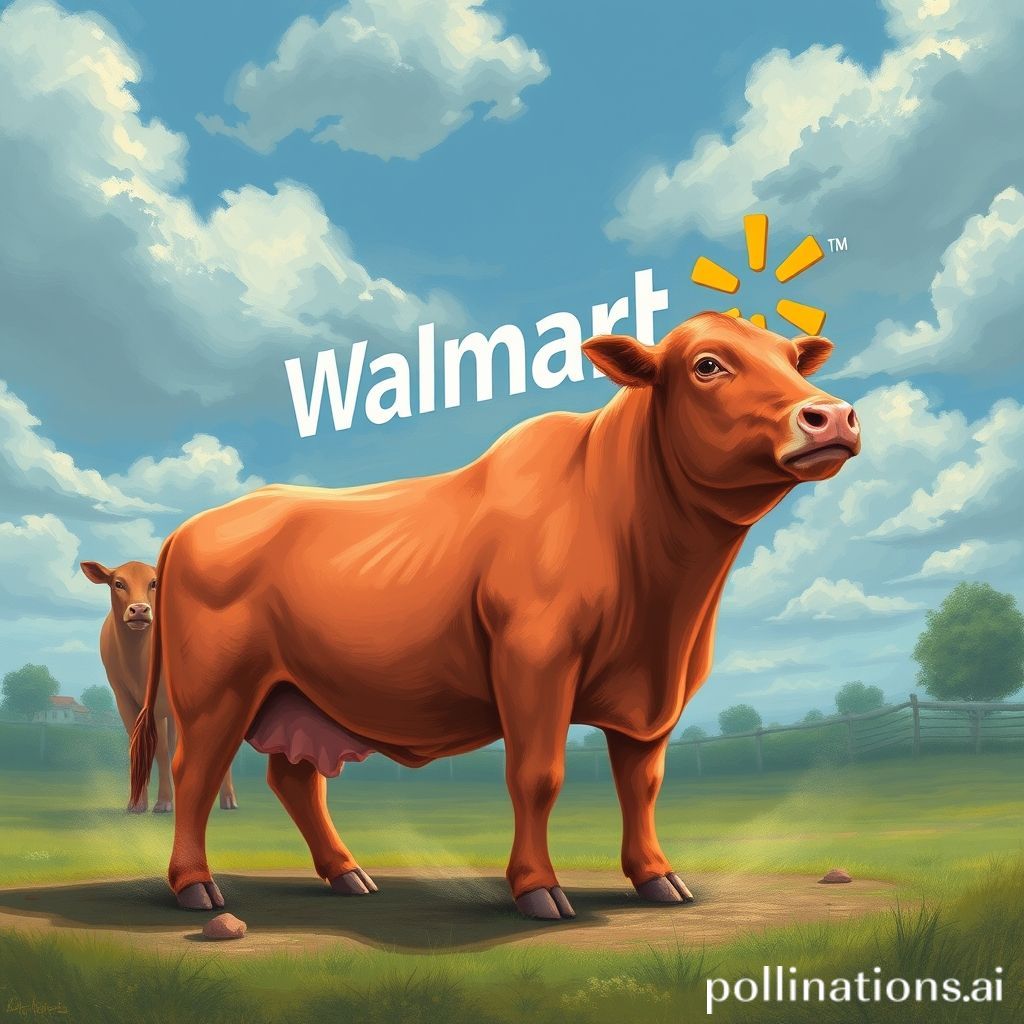
Walmart cuts out middlemen with first-ever beef facility as prices soar
Walmart takes control: Beef prices, facilities and the future of meat
Hey there! Ever wonder where your favorite burger comes from, or why those steak prices seem to keep climbing? Well, Walmart is shaking things up in the beef industry, and it could have a big impact on your grocery bill and the way meat gets from the farm to your plate. Let s dive into Walmart's bold move: building its own beef processing facility.
The price is not right: Why is beef so expensive?
Beef prices have been on a rollercoaster for a while now. Factors such as droughts affecting grazing lands, increased demand, and supply chain disruptions have all played a role in driving up the cost of your favorite cuts. But another significant piece of the puzzle is the role of middlemen processors who buy cattle from ranchers and sell beef to retailers.
Traditionally, the beef industry involves a complex chain of suppliers. Ranchers raise the cattle, feedlots prepare them for slaughter, and then processing plants turn them into the cuts of meat you see on supermarket shelves. Each step adds cost, which is ultimately passed on to the consumer.
Walmart's big move: Cutting out the middleman
In a groundbreaking move, Walmart is investing in its own beef processing facility in collaboration with Sustainable Beef LLC in North Platte, Nebraska. This isn't just another supply agreement; it's a direct ownership stake. This facility is expected to process a significant portion of Walmart's beef supply, directly linking ranchers to retail shelves.
So, what's the big deal? By cutting out some of the traditional middlemen, Walmart hopes to gain more control over the supply chain, improve efficiency, and ultimately, offer customers more competitive prices. This also provides ranchers with a more stable market for their cattle.
How it works: From ranch to retail
Here's a simplified look at the traditional beef supply chain versus Walmart's new approach:
Traditional beef supply chain:
Rancher -> Feedlot -> Processing plant -> Distributor -> Retailer -> Consumer
Walmart's new beef supply chain:
Rancher -> Sustainable Beef LLC/Walmart Processing plant -> Retailer -> Consumer
As you can see, the new model eliminates at least one or two steps, which can translate into cost savings. The facility in Nebraska is strategically located to source cattle from nearby ranchers, further reducing transportation costs and ensuring a fresher product.
More than just price: Quality and sustainability
Walmart's venture isn't solely about cost savings. The company has emphasized its commitment to quality and sustainability. By working directly with ranchers, Walmart can implement stricter quality control measures and promote more sustainable farming practices. This includes everything from humane animal treatment to reducing the environmental impact of beef production.
Walmart can also trace its beef products back to the source, providing consumers with greater transparency about where their food comes from and how it was raised. This level of traceability is increasingly important to consumers who want to make informed choices about the products they buy.
Impact on ranchers and consumers
This move has the potential to reshape the beef industry, but what does it mean for ranchers and consumers?
For ranchers, Walmart's facility offers a more stable and predictable market. Instead of relying on fluctuating market prices, ranchers can establish long-term relationships with Walmart and receive a fair price for their cattle. This can provide greater financial security and encourage investment in sustainable farming practices.
For consumers, the benefits could include lower prices, higher quality beef, and greater transparency. While it's unlikely that beef prices will plummet overnight, Walmart's direct involvement in processing could help to moderate price increases and offer more competitive options.
The ripple effect: Will others follow?
Walmart's bold move raises an interesting question: will other major retailers follow suit? If Walmart's venture proves successful, we could see a trend towards more vertical integration in the beef industry, as other companies seek to gain greater control over their supply chains and improve efficiency.
This could lead to a more competitive marketplace, with retailers vying to offer the best quality beef at the most affordable prices. It could also drive innovation in sustainable farming practices, as retailers demand greater transparency and accountability from their suppliers.
The future of meat:
Walmart's entry into beef processing is a sign of things to come. The traditional food supply chain is evolving, with retailers seeking greater control and transparency. While there are challenges to overcome, such as regulatory hurdles and the need for skilled labor, the potential benefits for ranchers, consumers, and the environment are significant.
As a consumer, I'm curious to see how this plays out. Will we see lower prices and higher quality beef at my local Walmart? Will other retailers follow suit, creating a more competitive marketplace? Only time will tell, but one thing is clear: the beef industry is changing, and Walmart is leading the charge. Perhaps we will see similar moves across different sectors of agriculture. It is exciting and a bit unnerving to see such significant changes happening in an industry so deeply rooted in tradition. As long as sustainability and the well being of both consumers and producers are at the forefront, these changes could be a win for everyone.

0 Comments:
Post a Comment